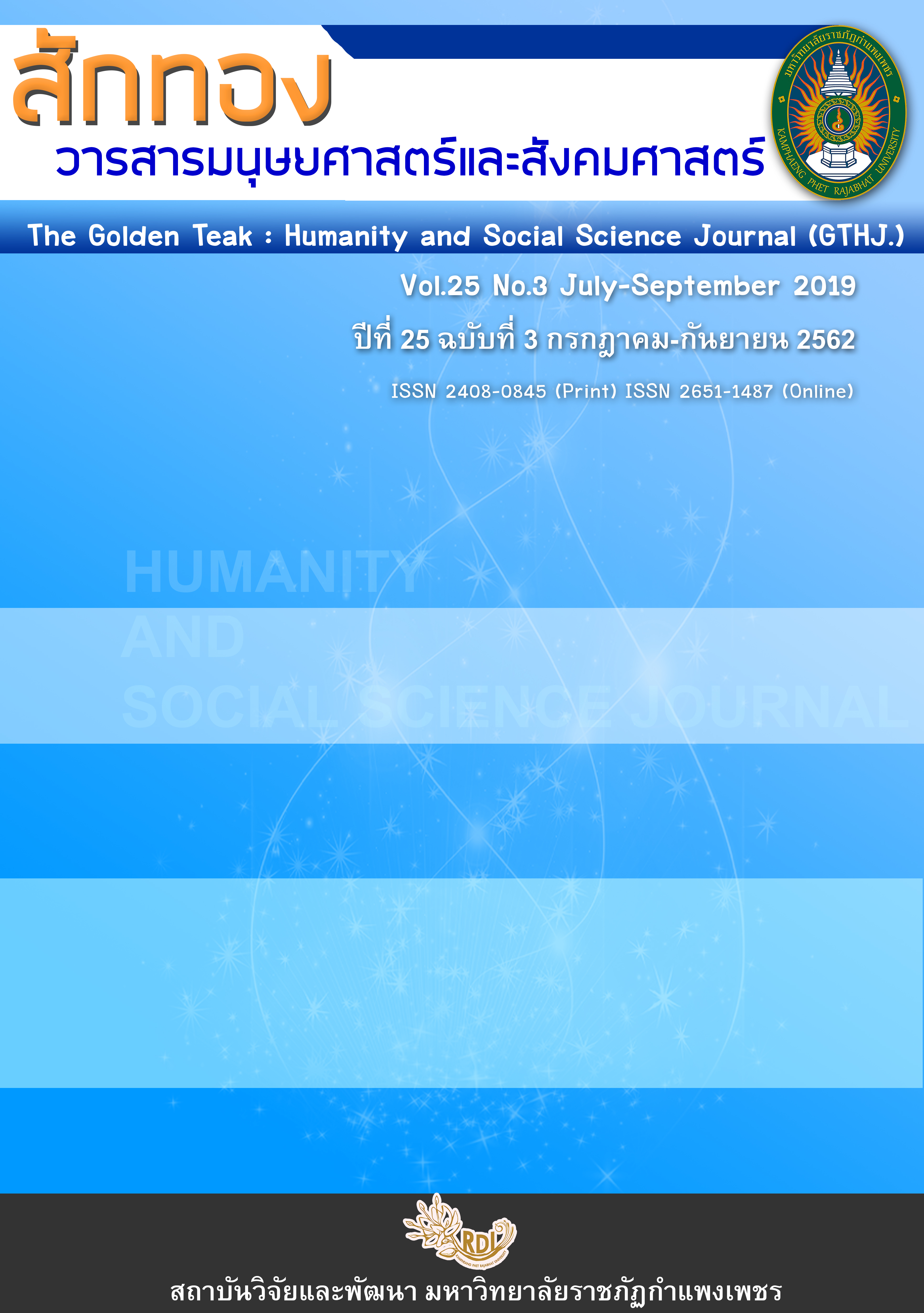A Model of Career Stability of Associate Directors under the Office Commission of Basic Education Commission
Main Article Content
Abstract
The objectives of this study were: 1) to study relationship between factors influencing career stability of associate directors under the Office of Basic Education Com; 2) to verify consistency of a model of career stability of these associate directors with empirical data; and 3) to propose a model of career stability of these school associate directors. A samples of 352 was randomly selected from associated directors under the Office of the Basic Education, in the 2015 academicyear. The results were as follows: 1) All factors were found to be positively related: career engagement and career stability of associate directors , school associate director roles and school associate director relationship , school associate director relationship and school associate director behavior , and school associate director roles and school associate director behavior 2) school associate director roles, school associate director relation, and school associate director behavior had direct influences on career engagement. Career engagement had direct influence on career stability of associate directors. It was, therefore, concluded that those factors of school associate director roles, school associate director relation, and school associate director behavior had indirect influence on career stability of associate directors and through the factor of career engagement 3) The model was consistency with the empirical data (=114.37, df=106, P-value=0.272, GFI=0.97, RMSEA = 0.015) school associate director roles, school associate director relation, school associate director behavior and career engagement.All four factors could collentively explain career stability of associate directors 82 per cent
Article Details
บทความที่ได้รับการตีพิมพ์เป็นลิขสิทธิ์ของวารสาร สักทอง : วารสารมนุษยศาสตร์และสังคมศาสตร์ สถาบันวิจัยและพัฒนา มหาวิทยาลับราชภัฏกำแพงเพชร
ข้อคิดเห็นใดๆ ที่ปรากฎในวารสารเป็นวรรณกรรมของผู้เขียนโดยเฉพาะ ซึ่งมหาวิทยาลัยราชภัฏกำแพงเพชรและบรรณาธิการไม่จำเป็นต้องเห็นด้วย
References
a large urban school district in the southeast. Doctoral dissertation, Retrieved form Dissertation Abstracts International.
Enloe, V. D. (2016). Secondary assistant principals as instructional leaders : characteristics
and experiences that contribute to their perceptions of readiness for the role
(Doctoral dissertation). [Online]. Available : https://etd.auburn.edu/bitstream/
handle/10415/5236/ ENLOE% 20DISSERTATION%20FINAL%20DRAFT_rev2.pdf?
sequence [2018, March 5].
Grate, S.L. (2005). A descriptive study of the role of the high school assistant principal in
the state of Indiana. Doctoral dissertation, Ball State University.
Harris, S. (2006). Assistant principals. In F. English (Ed.), Encyclopedia of educational
leadership and administration. Thousand Oaks, CA : Sage Publishing Co.
Hirschi, A., Freund, P.A. & Herrmann, A. (2015). The career engagement scale: development
and validation of a measure of proactive career behaviors. Unpublished
manuscript. [Online]. Available : https://www.researchgate.net/publication/ 264273333 [2018, March 5].
Jones, M. L., Zanko, M. & Kriflik, G. (2006). On the antecedents of career commitment. In J.
Kennedy & L. Di Milia (Eds.), Proceedings of the Australian and New Zealand Academy of Management Conference, 1-22. Rockhampton, Australia: Australian and New Zealand Academy of Management.
Kaplan, L. & Owings, W. (1999). Assistant principals: The case for shared instructional
leadership. NASSP Bulletin.
Kornpuang, A. (2007). The development of causal relationship model of professional
administratorship in basic education schools. Doctor of Philosophy Degree in
Education Administration ,Nareasuan University.
LaRose, L. (1987). Professional development for new assistant principals. Educational
Leadership.
Leelathanapipat, J. & Jadesadalug, V. (2017). Role ambiguity role conflict and role overloads
that affect turnover Intentions of lecturer in Private Higher Education Institutions. Panyapiwat Journal, 9(1), 96-107.
MacCorkle, M.L. (2004). Factors that influence the career stability of assistant principals.
(Doctoral dissertation, 2004) .Doctoral dissertation, Retrieved form Dissertation
Abstracts International. (Accession No.AAT3186940)
Mendez, R. (1987). Now is the time to redefine the principalship. The Clearing House.
Oliver, R. (2003). Assistant principal job satisfaction and desire to become principals.
NCPEA Education Leadership Review.
Oraphin. (2014). An analysis of work engagement construct. UMT-Poly Journal, 11(2),
75-79.
Usanee. (2012). Development of a causal model of teacher retention with work
engagement as mediator. Educational Research Methodology.Faculty of Education.
Chulalongkorn University.
Schaufeli, W., et al. (2002). The measurement of engagement and burnout : a two sample
confirmatory factor analytic approach. Journal of Happiness Studies, 3, 71-92.
Scott. (2011). An examination of expected versus actual tasks of public school secondary
assistant principals throughout Indiana. Doctoral dissertation Ball State University.
Secretariat Office of the Teachers Council of Thailand. (2006). Manual for professional
license. Bangkok : Teachers Council.
Smith, J.A. (1987). Assistant principals: New demands, new realities, and new perspectives.
NASSP Bulletin, 71(501), 9-12.
Tillio, C.D. (2015). How does the role of the assistant principal impact students learning
Outcome. Doctoral of education in the graduate school of education of Fordham
University New York.


